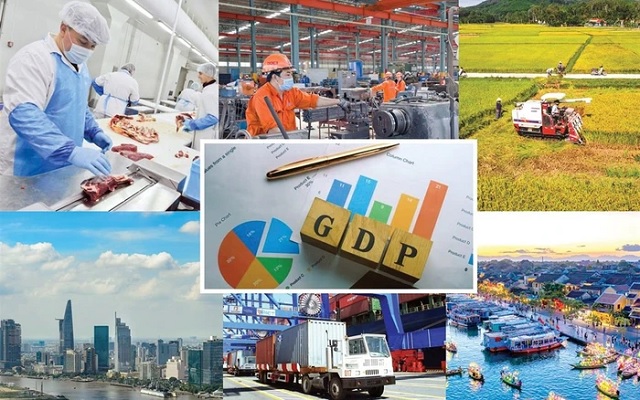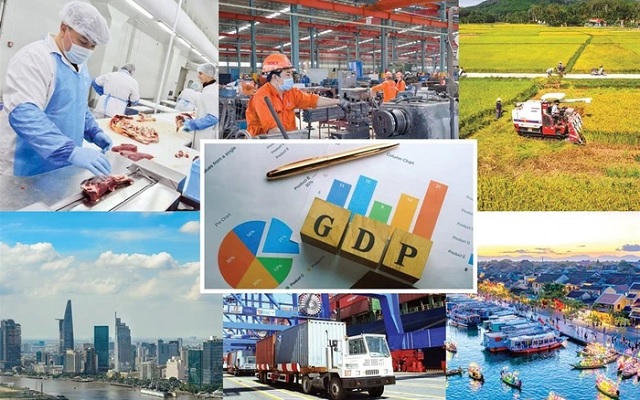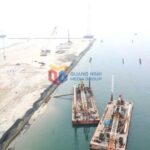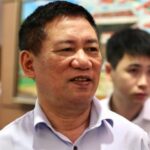
Prime Minister Directs the Formulation of Socio-Economic Development Plan and State Budget Estimates for 2026
|
The directive states that in 2025, the world situation underwent rapid and complex changes, presenting numerous challenges, especially in terms of US tax policies and major power competition, leading to a decline in global growth prospects. Additionally, advancements in science, technology, innovation, and artificial intelligence offered both opportunities and challenges for nations.
Domestically, the political, social, and macroeconomic situation remained stable, with a strong economic recovery. The country proactively and effectively responded to US tax policies and promoted harmonious and sustainable trade. Simultaneously, the reorganization of government agencies and the establishment of a two-tier local government system created new development opportunities. Emphasis was placed on three breakthrough strategies, the “four pillars,” and various strategies related to science and technology, international integration, private sector development, legislation, healthcare, education, and training.
The year 2026 will witness the 14th Congress of the Party, elections for the National Assembly and People’s Councils at all levels, and the initiation of the Socio-Economic Development Plan for the five-year period from 2026 to 2030. It marks the beginning of an era of vigorous development and prosperity for the nation, with a targeted double-digit growth rate from the outset. However, the global situation is expected to continue undergoing profound, complex, and unpredictable changes, presenting numerous challenges.
In this context, the Prime Minister instructed ministries, ministerial-level agencies, government agencies, economic groups, state corporations, provinces, and centrally-run cities (collectively referred to as central and local agencies) to embrace innovation and creativity, think big, and take bold actions, ensuring that no time or opportunities are wasted. Placing people and businesses at the center of all policies, harnessing self-reliance and aspirations for advancement, and uniting in turning challenges into opportunities for breakthroughs, the government is determined to achieve double-digit growth in 2026 and fulfill set goals, thereby creating momentum for the successful implementation of the Socio-Economic Development Plan for 2026-2030.
The focus should be on formulating the Socio-Economic Development Plan, state budget estimates for 2026, and the three-year financial and state budget plan for 2026-2028.
Formulating the Socio-Economic Development Plan for 2026 with Synchronized and Focused Solutions to Ensure Double-Digit Growth
The Prime Minister requested that the Socio-Economic Development Plan for 2026 be formulated based on a comprehensive and substantive evaluation of the implementation of the 2025 Plan and forecasts of domestic and international situations. It should include proactive scenarios, synchronized and focused solutions, with a strong emphasis on ensuring double-digit growth.
Central and local agencies are tasked with preparing reports on the Socio-Economic Development Plan for 2026, covering the following key aspects:
Conducting a Substantive Evaluation of the Implementation of the 2025 Socio-Economic Development Plan
Based on the results of the first six months of 2025, central and local agencies are to organize an evaluation and estimate of the implementation of the 2025 Socio-Economic Development Plan across all sectors and fields under their management. This should include a clear focus on the following specific issues:
Review and supplement the legal framework, improving the effectiveness of law enforcement in accordance with Resolution No. 66-NQ/TW of the Politburo. Streamline administrative procedures, business regulations, and remove bottlenecks. Resolve pending projects and establish a legal framework to implement the Resolutions of the Politburo on the private sector and innovation.
Improve the legal framework for the reorganization and streamlining of state agencies, enhancing decentralization and delegation of authority, along with the corresponding accountability of leaders. Strengthen discipline and administrative discipline, in conjunction with inspection, supervision, and control of power and resource allocation, while enhancing implementation capacity.
Enhance the efficiency of anti-corruption efforts, combat wastefulness, negative behavior, and vested interests. Effectively manage state assets post-merger and reorganization of agencies.
Focus on completing strategic infrastructure projects, prioritizing key national transportation projects, especially high-speed roads, inter-regional projects, and urban infrastructure. Connect the high-speed road network with airports and seaports, and implement high-speed rail and urban rail systems. Remove obstacles and resolve difficulties for large-scale projects. Attract investment in infrastructure projects through public-private partnerships.
Implement restructuring of sectors and fields, along with a change in the growth model, to enhance productivity, quality, efficiency, competitiveness, autonomy, adaptability, and resilience.
Ensure comprehensive development in cultural and social fields, harmoniously integrating them with economic growth. Guarantee social welfare and improve people’s lives. Innovate and enhance the quality of social policies to meet development requirements.
The 2026 Socio-Economic Development Plan Must Be Concrete, Quantifiable, and Results-Oriented
The Prime Minister requested that central and local agencies identify the fundamental issues of the 2026 Plan. The goals and indicators for growth and development should be concrete, quantifiable, and results-oriented, ensuring double-digit growth for the country in 2026, aligned with practical conditions and the level of development.
Regarding the main orientations and tasks for socio-economic development in 2026, there is a need to accelerate the completion of a full-fledged, modern, dynamic, and integrated socialist-oriented market economic institution. Consider the formulation and enforcement of laws as the “breakthrough of breakthroughs” in perfecting the country’s development institutions. Promote a favorable investment and business environment, encouraging innovation and attracting resources for development. Review and streamline administrative procedures, shifting from pre-inspection to post-inspection, reducing compliance costs for people and businesses.
Amend, supplement, and promulgate new legal documents to provide a synchronized legal basis for the operation of a three-tier state apparatus model. Synchronize fiscal, monetary, investment, market, pricing, trade, and other policies to achieve double-digit economic growth while maintaining macroeconomic stability and major economic balances, controlling inflation, and ensuring economic balances.
Promote industrialization and modernization, restructure the economy, and create a new, high-quality growth model, increasing labor productivity. Continue restructuring three key areas: public investment, state-owned enterprises, and credit institutions. Restructure production and service industries towards modernization, improving productivity, quality, and efficiency. Implement solutions to stimulate consumption and promote exports, accelerate the progress of public investment disbursement, and develop national brands, while combating smuggling, trade fraud, and counterfeit goods.
Develop the private sector as the most important driving force of the national economy, pioneering growth, job creation, enhancing labor productivity, national competitiveness, industrialization, modernization, and restructuring the economy towards a green, circular, and sustainable model, as stipulated in Resolution No. 68-NQ/TW of the Politburo. Foster an entrepreneurial spirit throughout society.
Expedite the construction of a synchronous and modern infrastructure system, especially transportation infrastructure, exploiting new development spaces and leveraging urban areas as regional growth drivers. Effectively implement planning for the Mekong Delta region. Concentrate resources on strategic and key infrastructure projects, develop energy infrastructure to meet the requirements of high economic growth, and ensure energy security. Promote digital economy and digital society, and encourage the application of digital technology.
Effectively implement fundamental, comprehensive, and breakthrough reforms in education and training, developing human resources to meet development requirements. Improve the quality of education at all levels, focusing on comprehensive training and paying attention to education and training in remote, ethnic minority, and mountainous areas. Develop an open, flexible, and interconnected education system, providing lifelong learning opportunities for all citizens and conducting training according to labor market demands.
Create a transparent and favorable investment environment, attracting domestic and foreign capital for the development of science and technology, research institutions, high-tech industries, strategic technologies, core technologies, source technologies, and digital technologies. Foster entrepreneurship, innovation, and digital transformation.
Modernize the national governance model. Continue to build and perfect a streamlined, strong, efficient, and effective state apparatus. Enhance decentralization and delegation of authority, in conjunction with resource allocation, improved implementation capacity, and strengthened inspection and supervision. Strengthen control over power, prevent corruption, wastefulness, negative behavior, vested interests, and local interests. Tighten administrative discipline and build a contingent of officials with qualifications, capacity, and good moral virtues, fostering a spirit of daring to think, dare to do, and take responsibility for the common good.
Prioritize social welfare, cultural development, education, healthcare, and improvement of people’s material, spiritual, and health conditions.
Strengthen natural disaster prevention, proactive response to climate change, ensure water security, effectively manage and utilize resources, protect the environment, achieve sustainable development goals, and promote a circular economy.
Guarantee national defense and security, resolutely and persistently struggle to protect and firmly maintain the independence, sovereignty, unity, and territorial integrity of the Fatherland. Ensure political security and social order and safety. Focus on modernizing the material foundation of the People’s Army and People’s Public Security forces, and develop a self-reliant, self-sufficient, modern, and dual-use national defense industry.
Comprehensively, effectively, and synchronously implement foreign affairs and international integration tasks, contributing to the consolidation of a peaceful, stable, and favorable environment for development.
Strengthen information and propaganda work, improve the effectiveness of mass mobilization, consolidate trust, and create social consensus.
Formulating State Budget Estimates for 2026 and the Three-Year Financial and State Budget Plan for 2026-2028
Regarding state budget estimates for 2026, the directive states that the estimates must be built according to current policies and regulations, ensuring the proper, sufficient, and timely collection of state budget revenues. It is necessary to calculate the factors of increase, decrease, and displacement of revenue sources due to changes in legal policies on the budget, taxes, fees, and charges, as well as the implementation of the roadmap for tax reduction. Additionally, forecasts of the world and domestic economic and financial situation should be considered.
Strengthen management, prevent revenue loss, effectively manage new sources of revenue, resolutely handle tax arrears, and tightly control tax refunds. Strive for an average increase of about 10-12% in domestic budget revenue estimates for 2026 (excluding revenue from land use fees, lottery tickets, state capital divestment, dividends, profits after tax, and differences in revenue and expenditure of the State Bank) compared to the 2025 evaluation, taking into account the exclusion of factors related to policy changes. The revenue estimate from import and export activities in 2026 is expected to increase by about 5-7% compared to the 2025 evaluation.
Formulate state budget expenditure estimates for 2026 in accordance with legal regulations, principles, criteria, and allocation norms (if any), meeting the requirements of budget restructuring in conjunction with the reorganization of government agencies and the establishment of a two-tier local government system.
Emphasize transparency and thrift practices from the outset of task determination, ensuring consistency in the implementation of tasks, from budget formulation to allocation, management, and utilization. Prepare estimates that are realistic and close to actual implementation, minimizing budget cancellation and fund carryover to the following year. Proactively review overlapping policies, tasks, and priorities, arranging the sequence of important and urgent tasks for implementation in 2026. Submit new policies, schemes, and tasks to competent authorities for approval only when necessary and with secured funding. Identify reductions in regular and investment expenditures associated with the reorganization of administrative units at different levels and the establishment of a two-tier local government model. Fully anticipate the financial requirements for implementing new policies, regimes, and tasks that have been decided or agreed upon by competent authorities.
For agencies and units with special financial mechanisms: Central administrative agencies that applied the special financial mechanism before 2024 shall prepare revenue and expenditure estimates for 2026 based on the provisions of legal documents on the state budget and Resolutions No. 104/2023/QH15, No. 142/2024/QH15, and No. 160/2024/QH15 of the National Assembly. If approved by competent authorities, implement the mechanism as per the approved content.
Regarding the formulation of local budget estimates, the People’s Committees of provinces and centrally-run cities shall direct departments, branches, People’s Committees at lower levels, and related units to focus on building estimates that are aligned with the socio-economic development goals of the locality. The local budget estimates for 2026 should ensure sufficient resources to implement policies, regimes, and tasks that have been issued by competent authorities, prioritizing key and focal tasks while ensuring efficiency and thrift.
Regarding the three-year financial and state budget plan for 2026-2028, based on the draft documents of the 14th National Congress of the Party, the Resolutions and Conclusions of the Central Committee and the Politburo on budget restructuring, public debt, streamlining of the apparatus, personnel reduction, reform of public non-business units, salary reform, and social insurance, the reorganization of administrative units at different levels, and the establishment of a two-tier local government model, along with the Law on State Budget, the Law on Investment Public, the Law on Public Debt, and relevant legal documents, the orientations for the National Financial Plan, and the five-year national and local public debt management plan for 2026-2030 shall be submitted to competent authorities for approval in accordance with regulations. The Ministry of Finance and the Department of Finance shall take the lead, in coordination with relevant agencies, to formulate the three-year financial and state budget plan for 2026-2028 and the three-year national and provincial public debt management program.
Central and local agencies and first-level budget units at the provincial level shall formulate the three-year financial and state budget plan for 2026-2028 within their scope of management and send it to the financial agency at the same level for synthesis.
– 08:25 29/05/2025
The Unveiling of An Gia’s (AGG) Eastern Tower at The Gió Riverside
Following the success of the South Wind Tower, An Gia Real Estate Group (AGG) is proud to announce the launch of the East Wind Tower, marking the commencement of phase 2 of The Wind Riverside project.
“The Case for Holistic Leadership: Vice Premier Ho Duc Phoc on Why Leadership Excellence Extends Beyond Provincial Wealth”
“The notion of ‘I spend what I earn’ is shortsighted. Who will tend to our border provinces and care for those in less fortunate regions? These are the concerns voiced by Deputy Prime Minister Ho Duc Phoc during his conversation with reporters at the National Assembly on May 26th.”
The Birth of a New Province: Introducing the Management Board for the Merged Territories of Quảng Trị and Quảng Bình
The proposal for the establishment of a regional Project Management Unit in Quang Tri is a strategic move to ensure efficient management of public investment projects post-merger with Quang Binh. This initiative aims to maintain the momentum of key infrastructure developments in the area, guaranteeing seamless progress, superior quality, and timely execution.





















